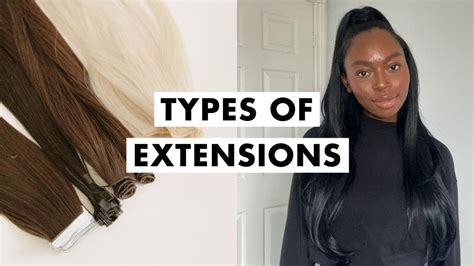Introduction
Hair extensions have become an increasingly popular way for individuals to enhance their appearance, add volume, length, and color to their hair. With the advancements in hair extension technology, there is a wide range of options available to suit every hair type and style. This article provides a comprehensive overview of hair extensions, including the different types, benefits, methods of application, and tips for care and maintenance.

Table 1: Types of Hair Extensions
| Type | Description |
|---|---|
| Clip-in Extensions | Temporary extensions that clip onto the hair |
| Sew-in Extensions | Extensions that are sewn into the natural hair using a needle and thread |
| Tape-in Extensions | Extensions that are attached to the natural hair using a sticky adhesive tape |
| Fusion Extensions | Extensions that are attached to the natural hair using heat or adhesive |
| Micro-Link Extensions | Extensions that are attached to the natural hair using small metal or silicone rings |
Benefits of Hair Extensions
Hair extensions offer numerous benefits, including:
- Increased Length: Extensions can instantly add length to short or medium-length hair, creating the illusion of longer, fuller locks.
- Added Volume: Extensions can amplify the thickness and volume of fine or thin hair, giving it a more voluminous appearance.
- Color Enhancement: Extensions can add streaks of color or change the overall hair color without the need for permanent dyes or bleach.
- Versatile Styling: Extensions allow for greater styling versatility, enabling individuals to experiment with different hairstyles and textures.
- Confidence Boost: Hair extensions can enhance self-esteem and confidence by creating a more flattering and desired appearance.
Methods of Hair Extension Application
The three most common methods of hair extension application are:
- Cold Fusion: Extensions are attached to the natural hair using a heated adhesive, which hardens and bonds the extensions in place.
- Hot Fusion: Similar to cold fusion, but the adhesive is melted before application, creating a stronger bond.
- Microlink: Extensions are attached to the natural hair using small metal or silicone rings that are crimped shut. This method is less damaging than fusion methods.
Hair Extension Care and Maintenance
Proper care and maintenance are essential to ensure the longevity and health of hair extensions. Key tips include:
- Regular Washing: Extensions should be washed with sulfate-free shampoos and conditioners, avoiding harsh chemicals that can damage the bonds.
- Gentle Brushing: Use a wide-tooth comb or detangling brush to gently remove knots, starting from the ends and working towards the roots.
- Heat Protection: Avoid using heat styling tools on the bonds of hair extensions, as excessive heat can weaken the attachment.
- Regular Trims: Trim the ends of hair extensions every 6-8 weeks to prevent split ends and maintain a healthy appearance.
Conclusion
Hair extensions are a versatile and effective way to transform hair, offering a wide range of benefits. With proper care and maintenance, extensions can last for several months, enhancing the appearance and confidence of the wearer. By understanding the different types, applications, and care methods, individuals can make informed decisions about hair extensions and achieve the desired results.
Additional Resources
- American Hair Loss Association
- International Society of Hair Restoration Surgery
- National Hair Loss Association
